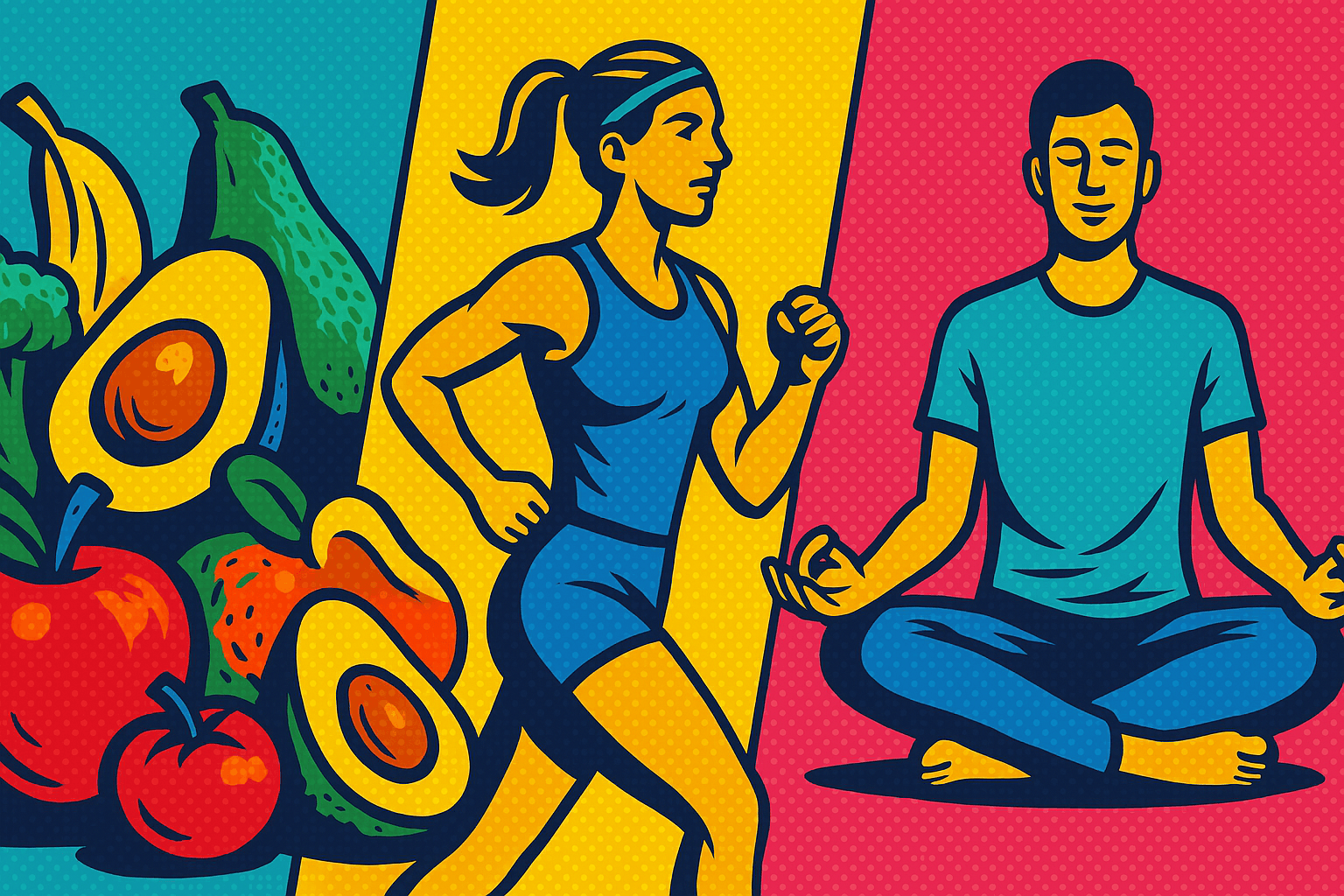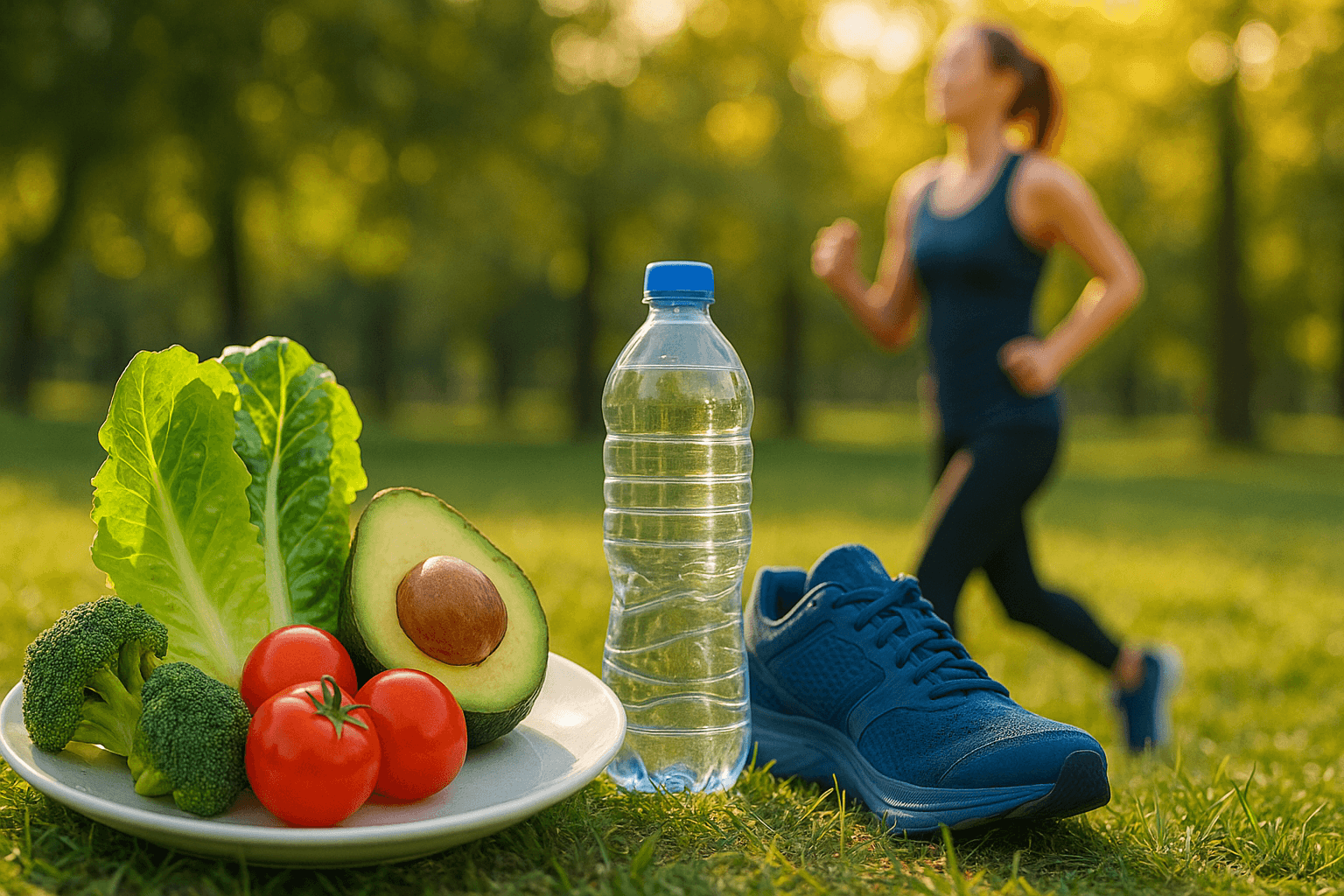Embracing a Healthy Lifestyle: Nutrition, Physical Activity, and Mental Wellness for Lifelong Health
Published on July 16, 2025

What is a Healthy Lifestyle?
A healthy lifestyle is a combination of good nutrition, regular physical activity, mental well-being, and other positive habits. These components support long life, prevent chronic diseases, and improve quality of life. It’s not about strict dieting or intense workouts but creating sustainable, enjoyable behaviors that nourish the body, mind, and soul.
The Foundation: Balanced Nutrition
Nutrition forms the basis for all bodily functions, from cellular repair and hormone production to immune defense.
Eating a diverse range of whole, nutrient-dense foods such as fruits, vegetables, whole grains, lean proteins, and healthy fats provides essential vitamins, minerals, antioxidants, and fiber.
These nutrients offer energy, protect against oxidative stress and inflammation, and reduce the risk of diseases like heart disease, diabetes, and cancer.
Mediterranean-Inspired Eating
Diets like the Mediterranean approach—rich in plant foods, olive oil, moderate protein, and low in processed items—are linked to heart and brain health, and increased longevity.
Hydration: A Crucial Element
Staying hydrated supports digestion, nutrient metabolism, temperature regulation, and detoxification. Water is vital for maintaining internal balance and proper body function.
Prioritizing Food Quality
Whole, minimally processed foods should be emphasized over refined and packaged items. Quality ingredients foster satiety, nutritional balance, and lasting health.
The Power of Physical Activity
Exercise boosts cardiovascular health, strength, flexibility, and mental wellness while reducing chronic disease risk.
The WHO recommends at least 150 minutes of moderate aerobic activity or 75 minutes of vigorous activity weekly, plus muscle-strengthening exercises on two or more days.
Aerobic Activity
Activities like walking, cycling, and swimming increase heart rate, improve oxygen flow, and support heart and lung health.
Strength Training
Resistance work maintains muscle mass, boosts metabolism, and enhances insulin sensitivity—important for preventing type 2 diabetes.
Mental Benefits of Movement
Exercise releases endorphins and neurotransmitters like serotonin and dopamine. These improve mood, reduce stress, and ease symptoms of depression. Exercise also enhances sleep, focus, and stress resilience.
Combining Nutrition and Exercise
Nutrition and exercise together offer greater benefits than either alone.
Balanced meals supply fuel for workouts and aid in recovery.
Protein supports muscle repair, carbs replenish energy stores, and fats help hormone balance.
Hydration and Electrolytes
Hydration maintains performance, cognition, and recovery. Replenish electrolytes (sodium, potassium, magnesium) during intense workouts to avoid cramps and fatigue.
Meal Timing and Energy Management
Coordinating meals with exercise boosts metabolic efficiency and steady energy. Pre-workout meals provide fuel; post-workout meals aid in recovery.
Mental and Emotional Well-Being
Mental health deeply influences physical health and behavior. Chronic stress, anxiety, and depression can impair motivation and disrupt metabolism.
Practices like meditation, deep breathing, and yoga lower stress hormones and build emotional resilience.
Sleep and Its Role
Adults need 7–9 hours of quality sleep per night. Poor sleep disrupts appetite-regulating hormones, increases fat storage, insulin resistance, and cardiovascular risk.
Good sleep hygiene includes consistent sleep times, reduced screen use before bed, and a restful environment.
Connection and Purpose
Supportive relationships and purposeful engagement boost emotional wellness. A sense of belonging fosters healthful behavior and mental balance.
Strategies for a Healthy Lifestyle
Set realistic, measurable goals
Add movement throughout your day
Dedicate time weekly to meal prep
Build a support network with friends or wellness groups
Use journals, apps, or wearables to track progress
Celebrate milestones for motivation
Practice mindfulness and self-kindness
Maintain a positive attitude and embrace gradual change
Overcoming Common Barriers
Time, motivation, and resources are frequent challenges.
Use short, efficient workouts like HIIT or brisk walks
Leverage tech for reminders and resources
Consult professionals like dietitians and trainers when needed
Choose enjoyable foods and activities
Plan meals and shopping in advance
Scientific Support for Lifestyle Changes
Research confirms that combined diet and exercise interventions improve cardiovascular risk, insulin sensitivity, inflammation, and mental health.
Lifestyle medicine promotes these strategies to prevent disease, reduce medication use, and lower healthcare costs.
Environmental and Social Impact
Choosing sustainable transport, local foods, and joining wellness programs supports personal and planetary health.
Eco-conscious decisions also promote community well-being and social inclusion.
Long-Term Benefits and Quality of Life
Healthy living enhances physical strength, cognitive sharpness, emotional stability, and longevity.
It lowers healthcare expenses, boosts productivity, and helps older adults stay independent.
Positive health habits often create a reinforcing cycle of better choices and improved outcomes.
Final Thoughts
Adopting a healthy lifestyle is an evolving journey of commitment, adaptability, and compassion.
With a foundation of sound nutrition, physical activity, mental balance, and social connection, individuals can thrive.
Small, consistent steps lead to meaningful change.
The best lifestyle is the one that’s sustainable, enjoyable—and worth living.








